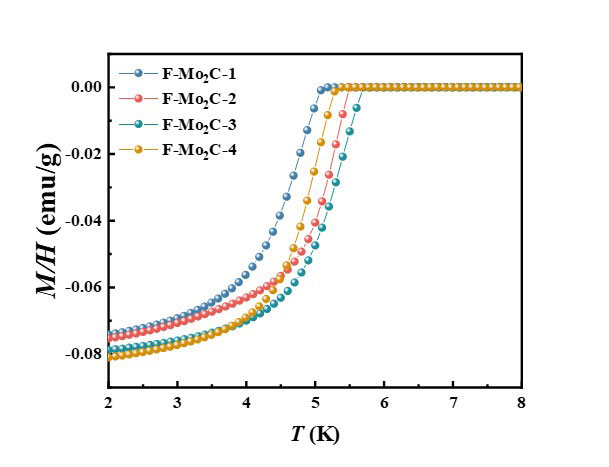PC-4-4
Tuning the superconductivity of molybdenum carbide through surface functional group modification
17:45-18:00 28/11/2023
*Lei Zhi1, Haoyu Xia1,2, Shengnan Zhang1, Jianqing Feng1, Chengshan Li1, Jianfeng Li1, Pingxiang Zhang1
1. Research Center for Superconducting Materials, Northwest Institute for Non-ferrous Metal Research, China
2. School of Materials Science and Engineering, Northeastern University, China
As the representative of the transition metal carbide, molybdenum carbide (Mo2C) has been explored for applications in catalysts, energy storage, and superconductivity. Generally, selectively etching Ga from Mo2Ga2C in HF solution is the most popular method for synthesizing Mo2CTx, where Tx represents the surface functional group (-O, -OH, -F)[1]. The existence of functional groups on their surface strongly influences the Fermi level density of states and thereby the electronic conductivity[2]. Therefore, tailoring the surface functionalization demonstrates excellent potential for tuning the superconductivity of Mo2C. In this study, we systematically investigated the superconductivity of Mo2C by fluorine doping. Mo2C was synthesized by the topochemical method, in which Mo2C can be transformed from pristine MoS2 without using HF. NH4F was considered a fluorine source and F-doped Mo2C was obtained by sintering the mixture of Mo2C and NH4F in different ratios.
The superconducting transition temperature (Tc) of the Mo2C sample was measured by using the zero-field cooling (ZFC) and field cooling (FC) modes; the value of H was 10 Oe. The values of Tc were determined from the M/H – T plot in ZFC mode. As shown in Fig. 1, the superconductivity of Mo2C was enhanced by increasing the content of fluorine and reached the highest Tc value of 5.7 K, in comparison with 3.2 K of Mo2C without F doping. The M – H loop of F-Mo2C, recorded at 3.0 K, illustrated a clear hysteresis loop, indicating a type-II superconductor.
[1] James L. Hart et al. Nat. Commun. 10, 522 (2019).
[2] Dmitri V. Talapin et al. Science. 369, 979 (2020).
This work was supported by a talent training fund (YK2110) from Northwest Institute for Non-ferrous Metal Research.
